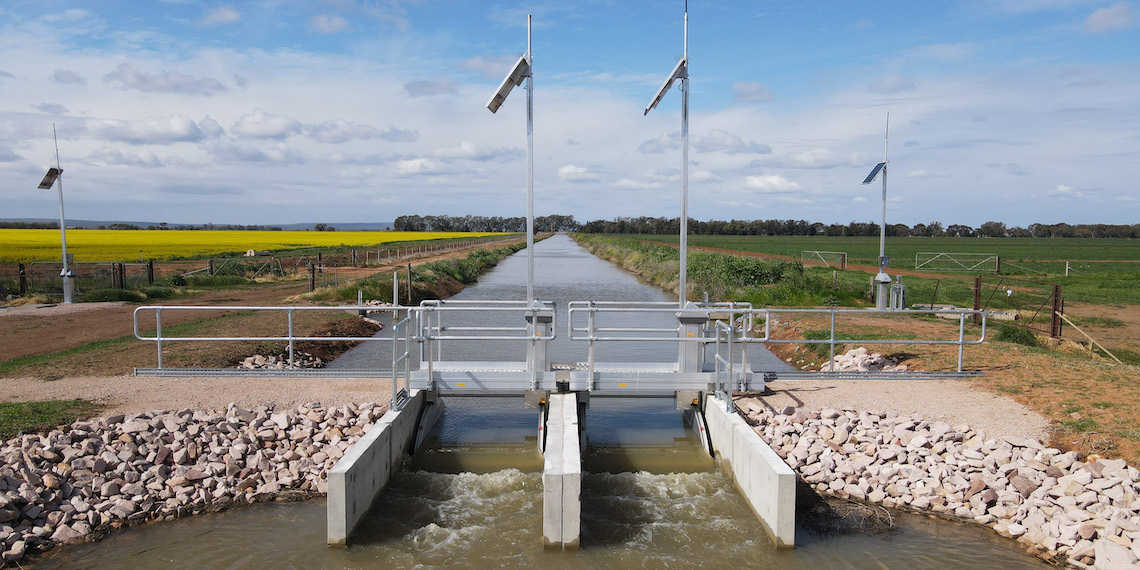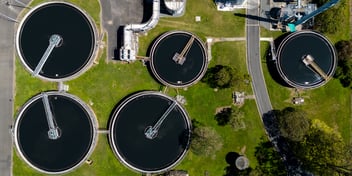Water futures research program hones in on responsible digitisation in irrigation

There are plenty of opportunities to leverage as the water community journeys towards digitisation. But the large-scale transformation that new technology brings also introduces the risk of inequitable change and unexpected side effects, and one research program has set out to explore what socially responsible algorithmic development and policy-making might look like.
Multi-disciplinary teams from the ANU’s Institute for Water Futures (IWF) have been working within the ANU Algorithmic Futures Policy Lab with the support of the Erasmus+ Programme of the European Union to catalyse pathways to successfully design technology and policy for just and effective digitisation within the water sector.
IWF researcher Dr Joseph Guillaume said the research program has been producing specific case studies exploring options for responsible algorithmic development and policy-making, particularly in light of socio-economic and environmental uncertainties.
“We are trying to imagine what the future could look like when algorithms have a greater role in our lives, and what we need to do to ensure socially responsible digitisation,” he said.
“Digitisation and the use of artificial intelligence (AI) is really all about transforming entire sectors. And when we try to transform entire industries, there can be ripple-on effects. If one part of the sector transforms in a way that we don’t want, then there is a heightened risk of unintended consequences.”
Guillaume said there are going to be equity issues involved in any transformation.
“There are some people who are going to benefit more from the change, and there are going to be some people that are at risk of losing out, particularly those that can’t keep up with the change," he said.
“This is especially important to consider within sectors like agriculture and water, which are connected to our entire food system."
But Guillaume said ensuring the socially responsible application of digitisation is also about making sure that organisations and people have control over how their data is used.
“It’s also about fairness – if somebody else is profiting from the data, there should be some sharing of costs and benefits,” he said.
“There are also issues specifically around trust. This includes trust in the data, but also, more broadly, trust in what others might do with the data. Issues around data sovereignty and privacy are ongoing concerns that need to be addressed, too.”
Equitability in irrigation
Within the broader algorithmic futures research program, Guillaume is working alongside Professor Katherine Daniell and Dr Hannah Feldman on the Social Responsibility of Digital Agriculture case study.
Working in partnership with Murrumbidgee Irrigation (MI), the case study explores the role of technology in irrigated agriculture, and includes a focus on the challenges and opportunities within the context of MI’s reach and digitisation aims.
As part of the Murrumbidgee Irrigation Modernisation program, the asset management team has been on a modernisation journey since 2009. In recent years, it has been developing data-driven tools and services to deliver water in the most effective way possible.
And the scale of this transformation is huge – MI has more than 3000 kilometres of channels, 4000 customer outlets, 50 pump stations of varying sizes and 15 node towers. Currently, 80% of Murrumbidgee Irrigation’s network is fully automated, with another program planned to increase automation to 96% of the total network.
Guillaume said that while equitable transitions to digitisation are important for many areas of the water sector, the irrigation sector, and MI’s digitisation journey in particular, presents specific issues in regards to managing different sets of information and the breadth of networks.
“On the one hand, there is this generational depth of knowledge that farmers have, but on the other hand, we also have the recent modernisation of irrigation, with new sets of data on telemeter portal levels and flows across the irrigation district coming in constantly,” he said.
“What we're really talking about here is how to make the most of both that long-standing knowledge and this new data, and how to do it responsibly. One of the angles we emphasise in the case study is around digital twinning as a means of delivering water in a more timely and reliable way.”
Referring to the project’s podcast with Murrumbidgee Irrigation Asset Strategy & Performance Manager Sam Yenamandra, Guillaume noted that another important part of the case study is understanding failure, and how to manage it appropriately within these new modernised systems.
“The reality is that level sensors break, irrigation gates break and batteries die – and when these things happen, there are sections of a system that are no longer operating properly and the data that we are getting is no longer of good quality,” he said.
“The outcomes we want in terms of control no longer work either. There is a need to be able to anticipate what these failures are, and manage them holistically.
“Failure is expected. It's not a bad thing, it just happens. But when failures do occur it’s important that the entire system does not collapse. We want to be able to respond accordingly. And, in some cases, that means we need to look out for early warning signs.
“When a failure occurs, we want to know the steps that need to be taken, not necessarily to stop the failure but to stop the cascading effects afterwards that have the ability to negatively impact many different parties.”
Informing just change
Guillaume said that different people have different views about how to achieve the socially responsible application of digital technology within the water sector, but there are a few key aims, including a collaborative and communicative mindset.
“My perspective is that ensuring social responsibility is very much about managing the transformation in a way to enable a coevolution of the technology side and the social side,” he said.
“It’s important that there's stakeholder involvement and engagement in the process so that their voices are heard. We really do need to be working together and ensuring strong lines of communication so that we all understand one another’s perspectives as the transformation occurs.
“There's always some compromise, but if we stay in tune with how the transformation is evolving, we are more likely to make sure everyone is happy with how things turn out, rather than having people surprised or disappointed or disrupted.”
Guillaume said the research team has worked to ensure their work with MI has been conducted in this way, too.
“I meet regularly with Murrumbidgee Irrigation and their suppliers, we have good connections with the government as well. Everybody's working together in achieving this transformation,” he said.
“There's no sense of having to go and consult, wait for feedback and come back. There's just constant communication. This helps ensure we are all moving steadily in the same direction.”
Guillaume said the project has taken an ‘action research’ approach, which prioritises two-way learning and close collaboration.
“With action research, the process is as important, if not more important, than the results. We engage collaboratively, we have two-way learning and we work with stakeholders to test new ideas within their specific context,” he said.
“It ensures we are constantly receiving feedback and taking opportunities to fine tune our approach. It also means we can work quickly because we are always in communication with the other collaborators on the project.”



